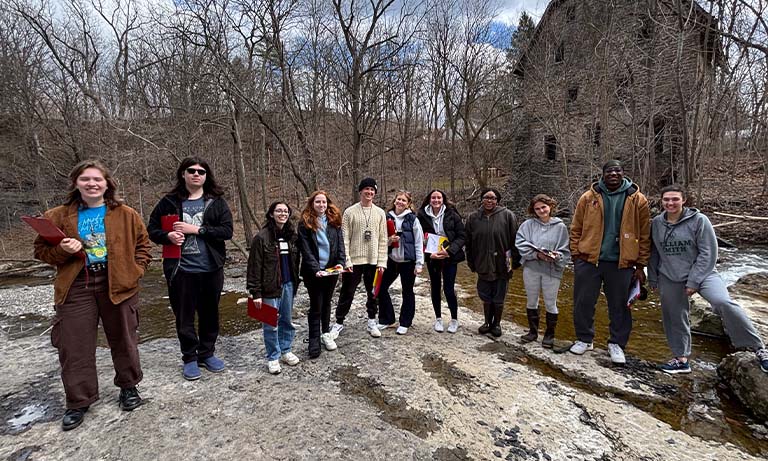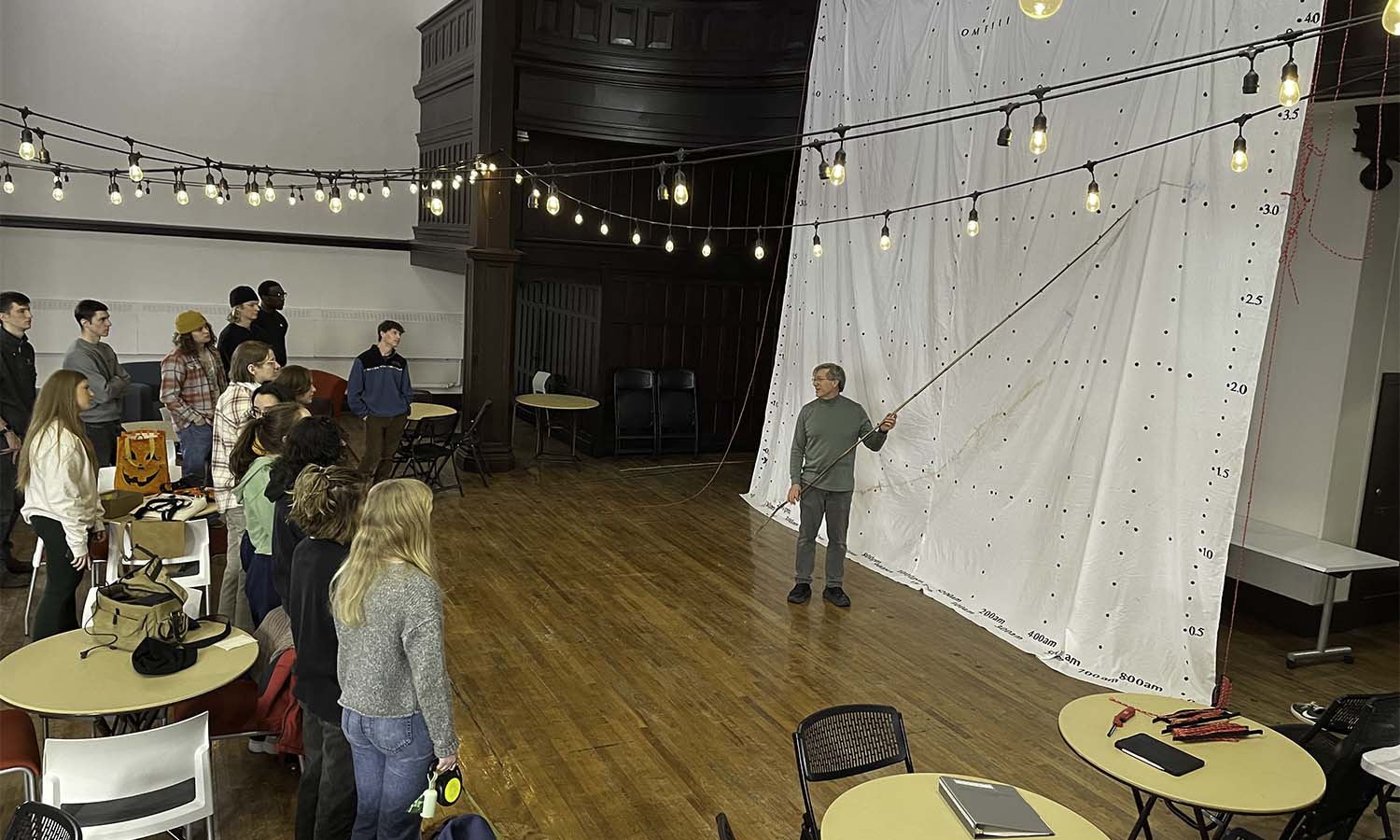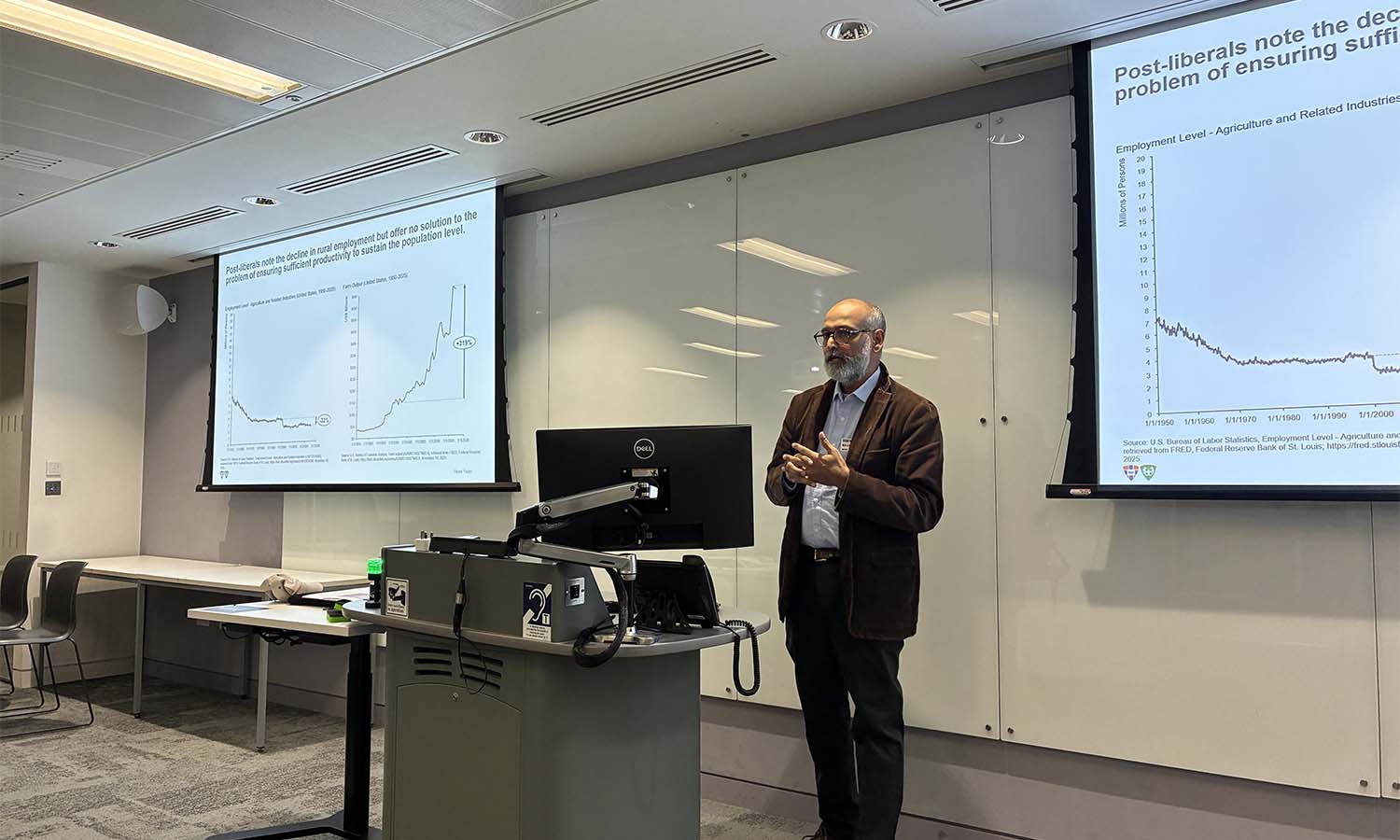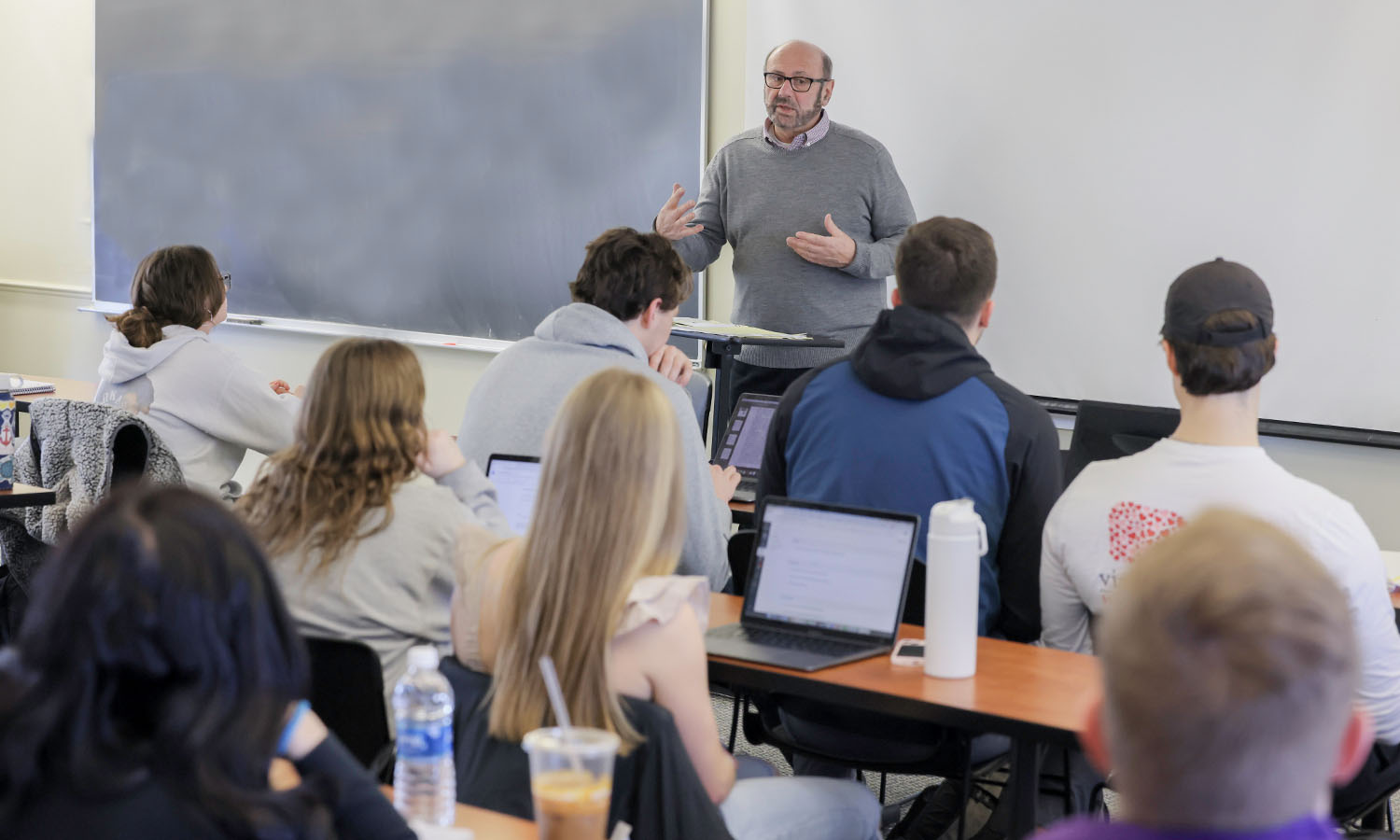
HWS News
7 April 2025 • Faculty Using Geological Data to Reconstruct the Past
Associate Professor of Geoscience David Kendrick connects students with history and the natural world in ways he hopes will last a lifetime.
Getting students to connect with coursework requires more than lectures, explains Associate Professor of Geoscience David Kendrick. It requires creative thinking and a physical connection with materials outside the classroom, away from devices.

Instead of using technology to list facts about the volcanic eruption in 79 CE Pompeii, Kendrick’s “Introduction to Geology” enables students to connect with the human experience through data to pause and consider the magnitude of its geological effects.
Using 20 x 20-foot muslin canvas, Kendrick demonstrates, to human scale, the effects of the eruption on the Roman city, which Kendrick says was similar in size to Geneva, N.Y.
Sprawled across the Bartlett Theatre floor in February, Kendrick and undergraduate teaching assistant Steph Campbell ’28 stenciled a 24-hour time range across the bottom of the muslin. During class, students took off their shoes and began to chart a series of dots they then connected to show the level of accumulation of ash and pumice that reached 18 feet. Then, they hoisted their life-size graph and considered the human perspective on this ancient geological event.
The eruption of Mount Vesuvius buried Pompeii in layers of volcanic ash and pumice, effectively preserving the city and its inhabitants. “You see these people and, hopefully, feel a moment of compassion for those who suffered there, while also getting a sense of the geological hazards,” Kendrick says. “We could just draw a graph on a piece of paper and look how high it got, but if you do it in real scale, you understand.”
Throughout Kendrick’s course, students reconstruct that geological bridge to the past by interpreting evidence and connecting directly with events preserved in rock. A key focus is understanding how Earth’s internal and external processes shape the world around us. For example, each semester, students visit Chimney Bluffs State Park on Lake Ontario multiple times to study its formation. The striking cliffs, rising up to 150 feet, were shaped from glacial drumlins and continue to erode under the forces of wind, water and weather. Students climb trails, take field notes, make sketches and collect rocks from the beach, which yield clues to the processes that formed the landscape.
By collecting and analyzing data, students experience history as they piece it together. By connecting to the physical world outside the classroom, Kendrick hopes these experiences endure in students’ minds.
Most of his students will never become geologists or geoscientists, Kendrick says. And that is not the goal. The coursework ultimately is meant to make students lastingly conscious of their world and what it can reveal to us.
“Wherever you go in the world, there’s geology around you. The Earth is there, and it is so full of history.”
Top: Students in "Introduction to Geology" pose at the Tully Limestone in Bellona, N.Y.



